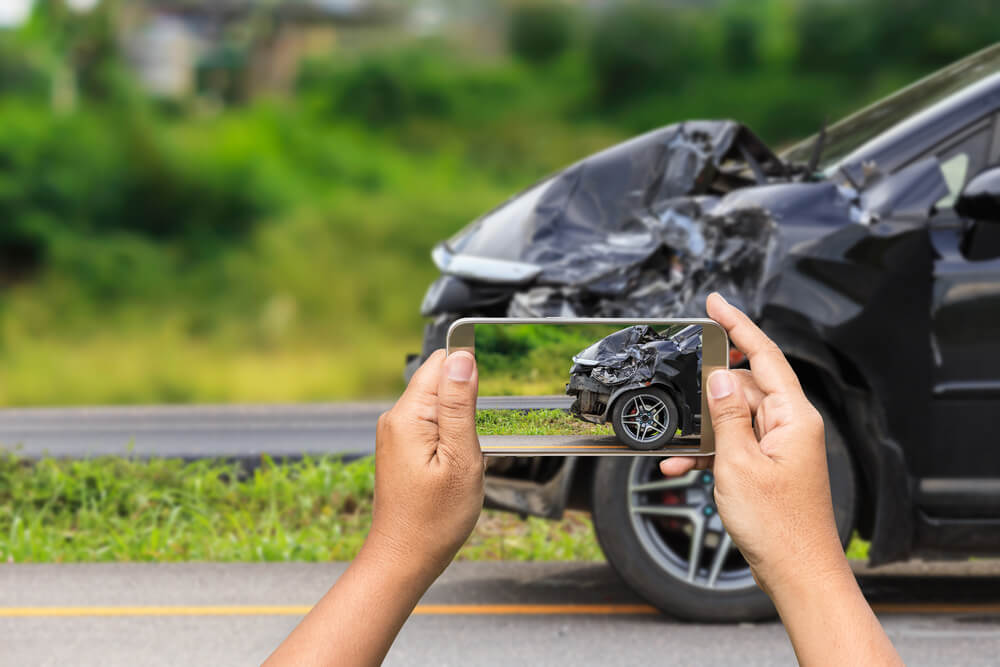Introduction
Even a minor car accident can be a stressful and confusing event. In the immediate aftermath, it’s vital to remain calm and take the necessary steps to ensure your safety and protect your legal rights. Whether you were rear-ended while stopped at a light or had a fender bender in a parking lot, understanding what to do after a sml car accident is crucial. In this guide, we will provide a comprehensive overview of the essential steps to take, ensuring you navigate this situation effectively.
Step 1: Ensure Safety
The first priority after a car accident is to ensure the safety of yourself and others involved. If possible, pull over to the side of the road. Turn on your hazard lights and exit your vehicle cautiously, checking for any injuries. If you or anyone else is hurt, call 911 immediately. Even if no one appears to be injured, it’s wise to seek medical attention to rule out any potential underlying issues. Once the scene is safe, gather your thoughts and take stock of the situation.
Check for any obvious damage to your car and the other vehicle(s) involved. Note the location of the accident, the time it occurred, and any other relevant details. If possible, take pictures of the damage and the scene of the accident. This documentation will be invaluable when filing an insurance claim or, if necessary, pursuing legal action.
If the accident occurred in a busy area, there may be witnesses who can provide valuable information. Politely ask for their contact information and a brief statement of what they saw. Their testimony could be crucial in determining fault and resolving the claim.
Once you have ensured safety and gathered the necessary information, you may want to consider contacting the police. While it’s not always necessary for minor accidents, a police report can provide an official record of the incident and can be helpful when dealing with insurance companies or the other driver.
Remember, staying calm and taking the appropriate steps can help minimize the stress and potential complications associated with a car accident. By following these guidelines, you can protect yourself, gather essential evidence, and ensure that your rights are safeguarded.
Small Car Accident? Here’s What You Need to Know
After a fender bender, it’s easy to be flustered. But don’t panic! Follow these steps to stay safe and get everything sorted out.
Safety First
First things first: ensure everyone’s safety. Pull over to a safe spot if possible, turn on your hazard lights, and check for injuries. If anyone is hurt, call 911 immediately.
If there are no injuries, get out of your car and check the damage. Take photos of the damage, including both vehicles and any property damage.
Exchanging Information
Once everyone is safe, it’s time to exchange information. This includes your name, address, phone number, insurance information, and license plate numbers. Don’t sign anything or admit fault at this time.
If possible, get the names and contact information of any witnesses. They can provide valuable information to your insurance company.
Reporting the Accident
In most states, you’re required to report any car accident to the police. Even if it’s a minor fender bender, it’s always best to file a police report. This will provide an official record of the accident and help protect you in case of any disputes.
Filing a Claim
Once you’ve reported the accident, it’s time to file a claim with your insurance company. They will investigate the accident and determine who is at fault. If you’re found to be at fault, your insurance premiums may go up.
If the other driver is at fault, their insurance company will be responsible for paying for your damages. This includes medical expenses, property damage, and lost wages.
Getting Legal Advice
If you’re involved in a car accident that results in serious injuries or property damage, you may want to consider getting legal advice. An attorney can help you protect your rights and get you the compensation you deserve.
After a SML Car Accident
A minor car accident, or SML, can be a stressful and confusing experience. The first step is to ensure your safety and the safety of others involved. Once you’ve checked for injuries, it’s crucial to exchange information with the other drivers involved. This information will be essential for insurance purposes and to facilitate the claims process. But what exactly do you need to exchange, and how do you go about it?
Exchange Information
Exchanging information after a car accident is crucial for both legal and practical reasons. It allows you to identify the other drivers involved, establish contact, and gather necessary details for insurance claims. Here’s a step-by-step guide to exchanging information after a SML accident:
1. **Stay calm and composed.** It’s understandable to be shaken after an accident, but try to remain calm and composed. This will help you think clearly and make informed decisions.
2. **Check for injuries.** Before exchanging information, ensure that you and the other drivers are not injured. If anyone requires immediate medical attention, call 911 immediately.
3. **Gather information.** Once you’ve ensured everyone’s safety, gather the following information from the other drivers involved:
- Name
- Address
- Phone number
- Insurance company and policy number
- License plate number
- Make and model of the vehicle
- Description of the accident
It’s important to be thorough when gathering this information, as it will be essential for insurance purposes. If you’re unable to obtain all the necessary details at the scene of the accident, follow up with the other drivers later to get the missing information.
4. **Take photos.** If possible, take photos of the accident scene, including the damage to both vehicles. These photos will provide valuable documentation for your insurance claim.
5. **File a police report.** If the accident resulted in significant damage or injuries, it’s advisable to file a police report. The police report will provide an official record of the accident and can be helpful in resolving any disputes with the other drivers or their insurance companies.
Small Car Accident: What to Do?
Car accidents, no matter how minor, can be a stressful and confusing experience. In the aftermath of an accident, it’s important to remain calm and take the necessary steps to protect yourself and your interests. This article will provide a comprehensive guide on what to do after a small car accident, ensuring that you have the information you need to navigate this challenging situation.
Even if the accident appears minor, it’s crucial to take it seriously and follow the steps outlined below. By doing so, you can protect your legal rights, ensure the safety of yourself and others, and facilitate a smoother claims process.
Gather Evidence
Documenting the accident scene is essential for insurance purposes and potential legal proceedings. Take photos of the following:
- Vehicle damage, capturing both your car and the other vehicle involved
- Any visible injuries sustained by yourself or passengers
- Road conditions, including weather, lighting, and traffic signs
- The location of the accident, using landmarks or street signs for reference
- License plates and contact information of the drivers involved
If possible, capture photos from multiple angles to provide a comprehensive record of the scene. These photos will serve as valuable evidence in the event of a dispute or legal action.
Small Car Accident: What to Do When You’re in a Fender Bender
fender-benders are a bummer, and they’re annoyingly common. Whether it’s a little bump or a more serious smash-up, it’s important to stay cool, collected, and remember important safety tips to follow after a small car accident.
Don’t panic and, if possible, pull over to the side of the road. If you can’t move your car, turn on your hazard lights. Then, check for any injuries. If you or anyone else is hurt, call 911 immediately.
Report the Accident
Once you’ve checked for injuries, it’s time to report the accident. Even if there’s no visible damage, it’s still a good idea to file a police report. This will help protect you if the other driver tries to claim you were at fault. To file a report, simply call the police non-emergency number and they will send an officer to the scene.
Exchange Information
Once the police have arrived, they will help you exchange information with the other driver(s) involved in the accident. This includes your name, address, phone number, insurance information, and license numbers.
Take Photos
If you can, take pictures of the accident scene. This will help you document the damage and provide evidence to your insurance company. Be sure to take pictures of both vehicles, any damage to property, and any injuries.
Contact Your Insurance Company
As soon as possible after the accident, you should contact your insurance company. They will need to know about the accident and will start the process of filing a claim. Be sure to provide your insurance company with all of the information you collected, including the police report, photos, and the other driver’s information. You must be as detailed as you can be so that your insurance company can get a clear understanding of the accident so they can take proper steps to help you solve the problem with your car.
An Overview of Minor Car Accidents: Understanding the Significance
A minor car accident, often referred to as a “sml car accident,” may not seem like a serious matter at first glance. However, it’s crucial to recognize the potential consequences and take appropriate steps to ensure your well-being. While some minor accidents may result in little to no visible damage, they can still lead to unseen injuries or complications that can manifest later on.
Seek Medical Attention
Even if you feel perfectly fine after a minor car accident, it is highly advisable to seek medical attention as soon as possible. Some injuries, such as whiplash or concussions, may not show immediate symptoms. By undergoing a thorough medical evaluation, you can rule out any underlying issues and ensure your health is not compromised.
Document the Accident
In the aftermath of a minor car accident, it is essential to document all the relevant details. This includes taking photos of the damage, exchanging insurance information with the other driver, and obtaining contact details of any witnesses. This documentation will be invaluable when filing an insurance claim or, in the unlikely event, of legal proceedings.
File an Insurance Claim
Depending on the circumstances of the accident and the extent of the damage, you may need to file an insurance claim. Contact your insurance company promptly and provide them with all the necessary documentation. They will guide you through the process and help you recover the costs associated with the accident.
Hire a Lawyer (Optional)
In some cases, it may be beneficial to hire a lawyer to assist you with your case. This is especially true if the accident resulted in significant injuries or property damage. Lawyers can help you navigate the legal complexities, negotiate with insurance companies, and represent your interests in court if necessary.
Protect Your Health and Legal Rights
Taking swift action after a sml car accident is paramount to safeguarding your health and legal rights. By seeking medical attention, documenting the accident, filing an insurance claim, and considering legal assistance when needed, you can minimize the potential negative consequences and ensure that your needs are met.
SML Car Accident
A car accident is never pleasant, big or small. It can be a harrowing experience that leaves you feeling shaken and confused. If you’ve been involved in a car accident, it’s important to know what to do next. Here’s a step-by-step guide to help you through the process with as little stress as possible.
Contact Insurance Companies
As soon as you’ve been involved in an accident, it’s important to notify your insurance company. This should be done as soon as possible – don’t wait until you’ve had time to calm down or think things over. The sooner you report the accident, the sooner your insurance company can start processing your claim.
Exchange Information
Once you’ve contacted your insurance company, the next step is to exchange information with the other driver(s) involved in the accident. This includes your name, address, phone number, insurance information, and license plate number. It’s also helpful to take pictures of the accident scene and any damage to your vehicle.
File a Police Report
If the accident is serious, you should file a police report. This will help to document the accident and provide you with a record of what happened. The police report can also be helpful when filing an insurance claim.
Get Medical Attention
Even if you don’t think you’re injured, it’s important to get medical attention after a car accident. Some injuries may not be immediately apparent, and it’s better to be safe than sorry.
Hire an Attorney
If you’ve been seriously injured in a car accident, you may want to consider hiring an attorney. This can help you get the compensation you deserve for your injuries and damages.
Don’t Panic!
If you’ve been involved in a car accident, it’s natural to feel overwhelmed. But don’t panic. Just take a deep breath and follow these steps. With a little preparation, you can get through this and move on with your life.
After a Sml Car Accident: A Step-by-Step Guide
Oh boy, you’ve just been in a car accident. It might be a fender bender or a more serious collision. Regardless, it’s important to stay calm and follow these steps to protect yourself and your legal rights.
Stay Calm and Ensure Safety
First things first: Take a deep breath and check for injuries. If you or anyone else is hurt, call 911 immediately. Once you’ve ensured everyone’s safety, move your vehicle to the side of the road if possible.
Exchange Information
Grab a pen and paper, or use your phone to jot down the following information:
- Name, address, phone number of all drivers involved
- License plate numbers and insurance information
- Make and model of all vehicles
- Date, time, and location of the accident
- Names and contact info of any witnesses
Document the Scene
Take pictures of the accident scene, including damage to the vehicles and any visible injuries. If there are skid marks or debris, note their location. Also, write down a brief description of what happened from your perspective.
Notify Insurance Companies
Call your insurance company as soon as possible to report the accident. Provide them with the information you gathered, and they will guide you through the claims process.
Seek Medical Attention
Even if you don’t feel injured initially, it’s important to see a doctor for a checkup. Some injuries, like whiplash, may not manifest themselves right away.
Hire an Attorney (Optional)
In certain situations, such as serious injuries or disputes with insurance companies, it may be beneficial to consult with an attorney. They can help you navigate the legal process, negotiate a fair settlement, and protect your rights.





Leave a Reply